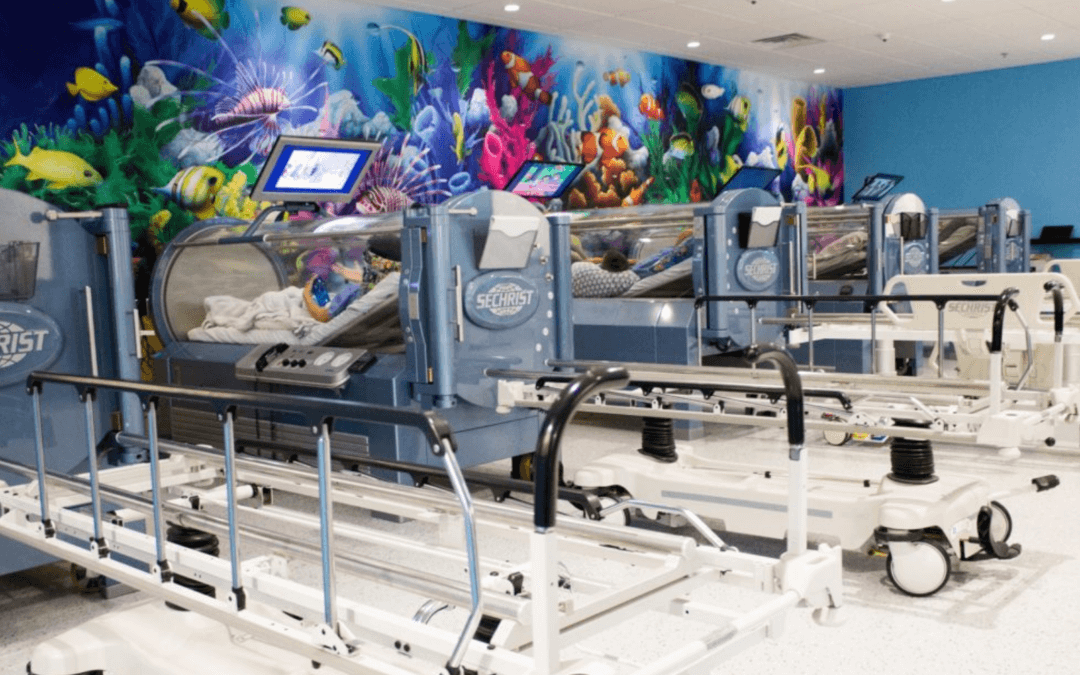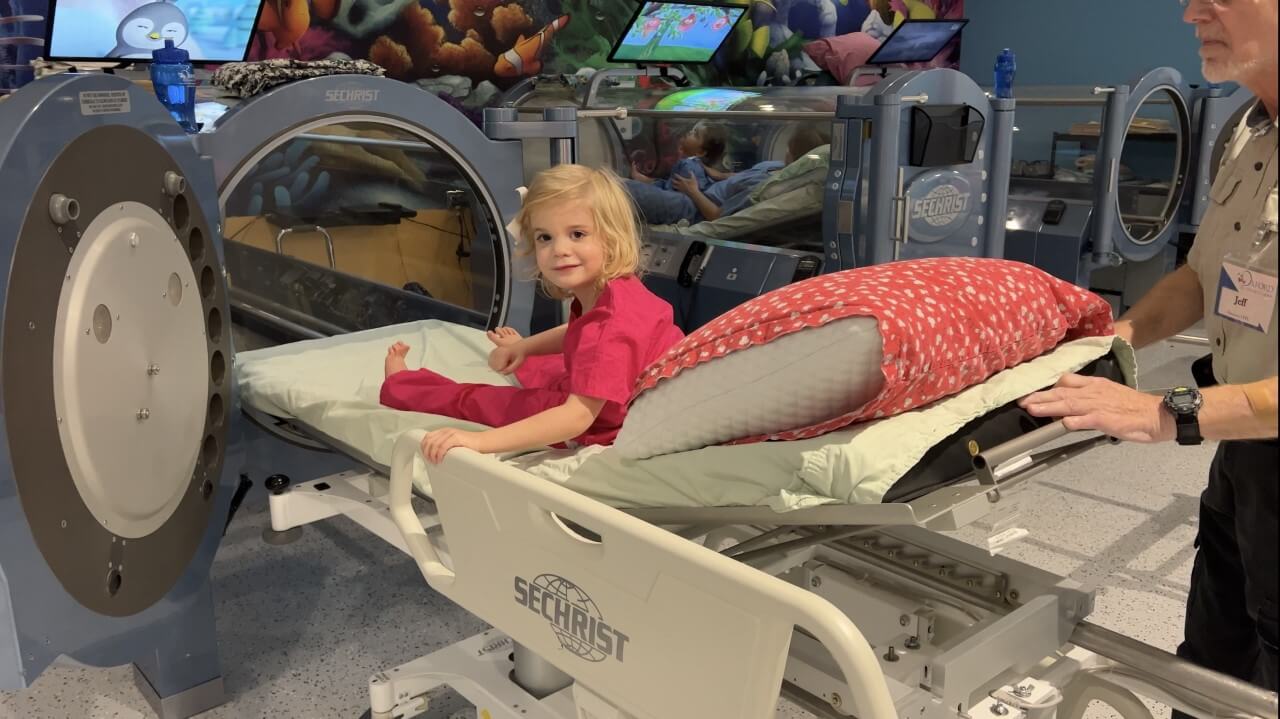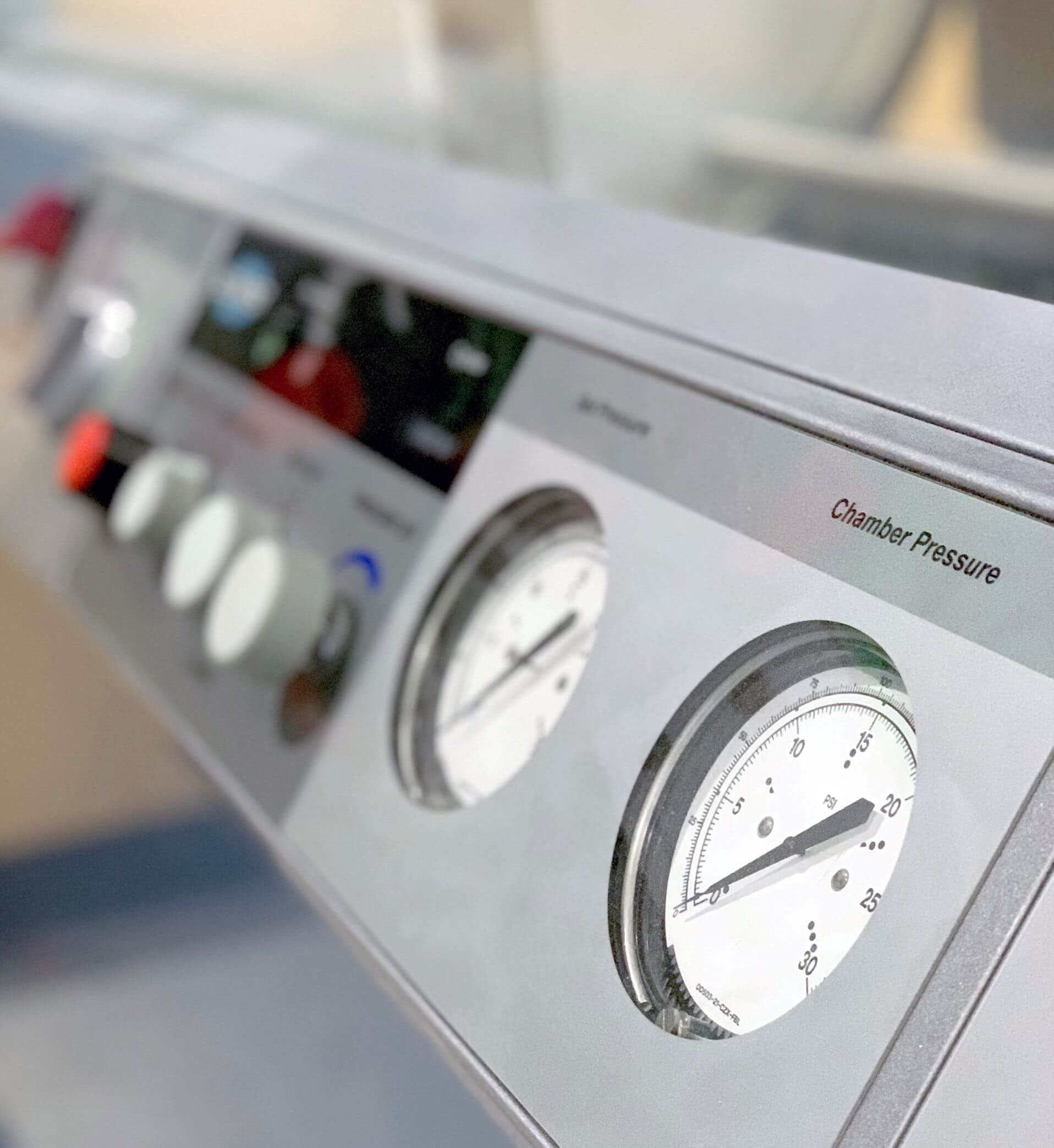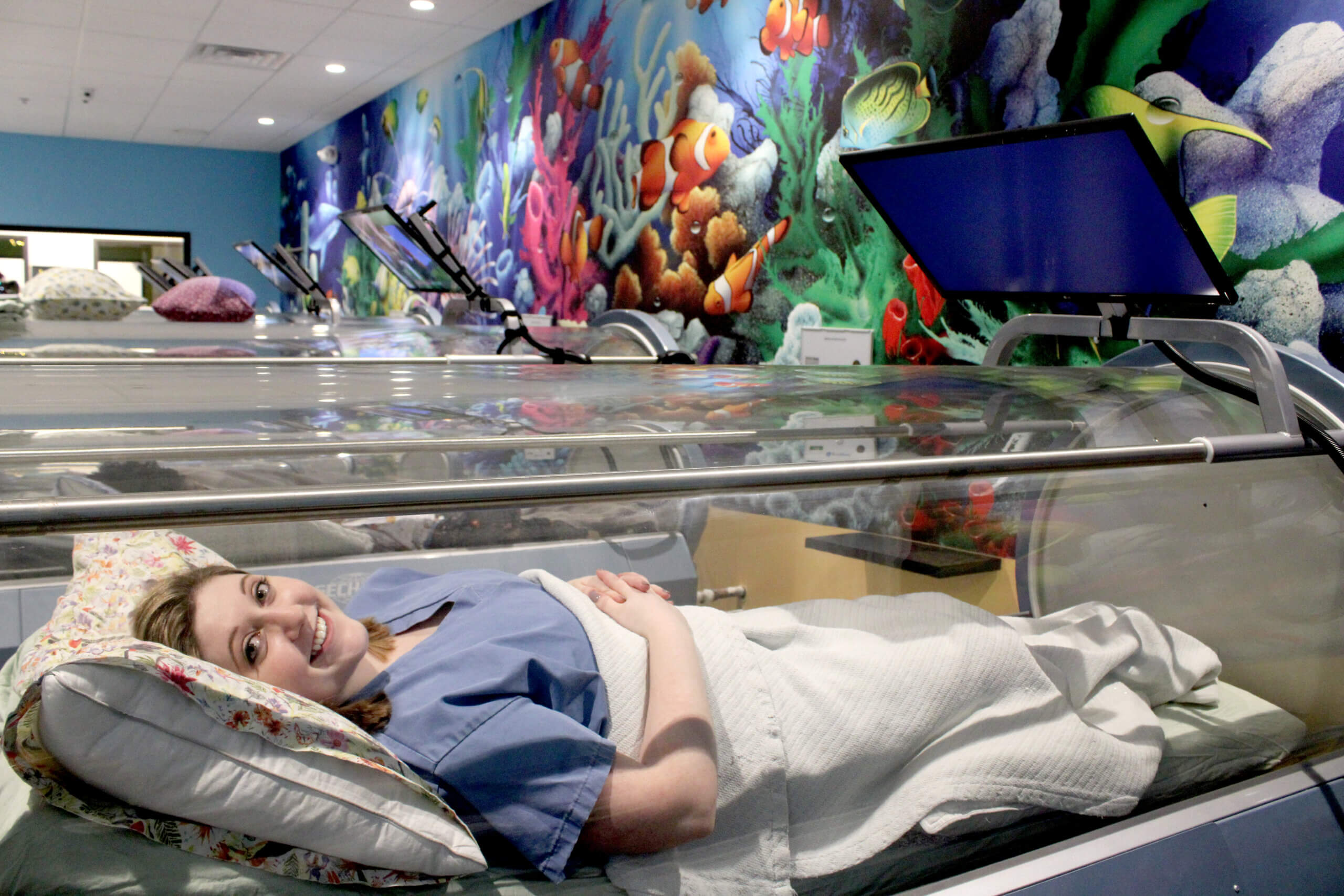What can you legally put into your home? (This is in the US; Canada does not allow even mild hyperbarics in the home.) The question about what is the difference between hard-sided medical grade hyperbaric oxygen chambers and inflatable hyperbaric chambers (mild/soft hyperbarics) is a common asked question. At the Oxford Recovery Center, we use only hard-sided Sechrist chambers. If inflatable bags were an effective treatment modality it would only make sense for us to use them, as the cost would be immensely less expensive for the chamber cost, oxygen (tank, plumbing, corral, and gas), not to mention the extensive NFPA-99 regulations for the build-out. However, hyperbaric oxygen therapy is NOT the same as the mild hyperbarics.
To compare the differences, let’s look at the oxygen in the blood. We measure the changes from arterial blood gases. Arterial oxygen at 2.4 ata 100% oxygen is 1,824 mmHg (normal air pressure is 157mmHg). This refers to how much oxygen is getting into the body, what is making the changes. Compared to using mild/soft chambers, the arterial oxygen at 1.3 ata 24% oxygen is 230 mmHg (normal air pressure is 157mmHg).Now Consider this: If you have a non-rebreather oxygen mask hooked up to an oxygen tank (the oxygen mask you see paramedics use when transporting a patient), the mask can deliver about 55% oxygen. The percentage is used by using the conversion equation (1ATA x 760mmHg x0.55=418mmHg). The moral of the story is that an oxygen mask can deliver a higher amount of oxygen than an inflatable bag so why would you expose yourself to the time and expense for such little benefit.
Let’s examine the reasons why we do NOT use inflatable bags and we do NOT call them hyperbaric oxygen chambers. For a quick comparison:
Hard Chamber |
Soft Chamber |
| 100% medical grade oxygen | Ambient air (approximately 21% oxygen—mostly nitrogen) |
| Pressurized typically to a max of 3.0 ATA or depth of 66 feet (Some go to 6.0 ATA or 165 feet) | Pressurized to a max of 1.3 ATA or depth of 8 feet |
| Regrow bone and tissue in severely damaged areas of the body | Cannot regrow bone and tissue |
| Supported by thousands of clinical studies which validate successful healing | No such correlation has been made with soft chambers and healing |
| Many treatments are recognized for reimbursement by insurance companies and federal government | No conditions are reimbursed by insurance companies using soft/mild chambers |
| Designed to go to therapeutic pressures to achieve healing | Designed to temporarily treat divers and mountain climbers in route to a hard chamber |
| Kills harmful bacteria | Can promote the undesirable growth of aerobic bacteria |
| Meets the American Society of Mechanical Engineers, Pressure Vessels for Human Occupancy (“ASME PVHO-1”) standard | Does not meet the “ASME PVHO-1” standard |
| Loss of electrical power has no effect on pressure and oxygen flow | Loss of electrical power and chamber rapidly deflates causing possible barotrauma to patient’s ears and pneumothorax to patient’s lungs |
| No risk of contaminated or polluted air. A closed system of oxygen is piped in directly from a liquid oxygen tank. The liquid oxygen is converted to a gas on-site and pumpled directly into the individual chamber. There is no outside air contamination. | Risk of breathing contaminated or polluted air which can be counterproductive |
| Designed to heal ischemic tissue or tissue that is restricted from receiving enough oxygen by hyper-oxygenating the body, blood and plasma | No research shows healing ischemic tissue |
| Research shows a total of 40 treatments | Some results may be obtained in the lower pressure air filled chambers, however it will take many, many more sessions and the results often do not hold, or create issues with yeast or bacteria growth |
| Designed to use enriched gases like 100% oxygen | Never designed to be used with enriched gases like 100% oxygen |
| Arterial oxygen at 2.4 ata 100% oxygen is 1,824 mmHg (normal air pressure is 157mmHg). This refers to how much oxygen is getting into the body, what is making the changes. | Arterial oxygen at 1.3 ata 24% oxygen is 230 mmHg (normal air pressure is 157mmHg). |




